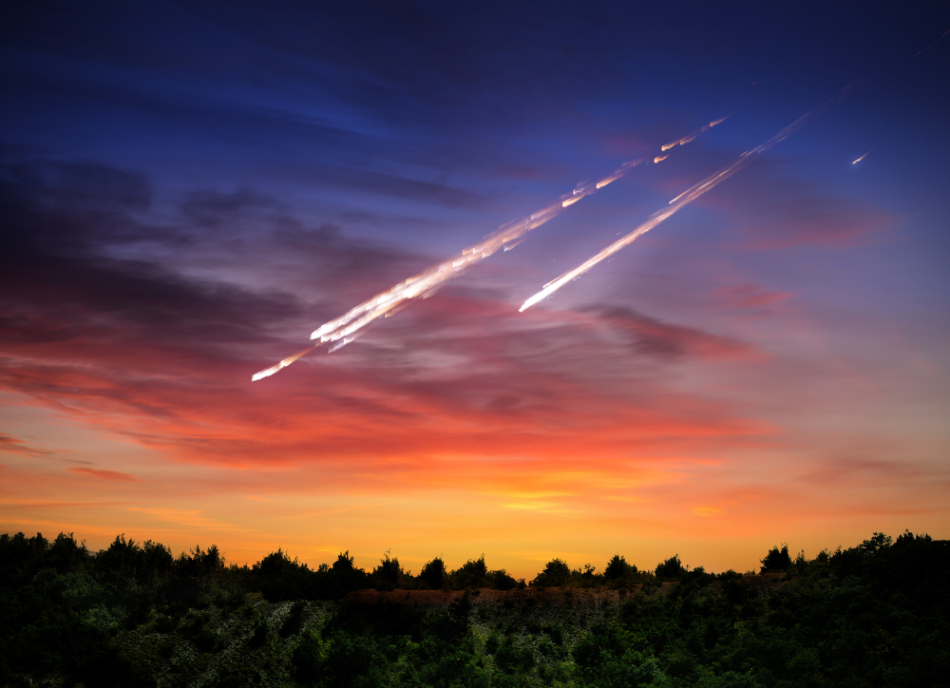
Image Credit: Triff/Shutterstock.com
Presolar grains of dust taken from a meteorite that crashed into the Australian landscape over 50 years ago are thought to be among the oldest materials on Earth. Researchers analyzing the space rock discovered that the oldest of the presolar grains were over 7 billion years old. This means that the space dust predates the planet Earth, the Sun, and the entire solar system itself which is a mere 4.571 billion years old in comparison.
The samples used in the study led by University of Chicago and Field Museum researchers were taken from the https://meteorites.fieldmuseum.org/home which crashed into Earth near Murchison, Victoria, Australia, in 1969.
The meteorite is of particular interest being one of the most studied meteorites due to the size and mass of the fragments, some of which are up to 7 kg. The total mass of recovered meteorite fragments exceeds 100 kg which were found and collected over an area of 13 km2. What’s more, the meteorite earned its reputation as many of the pieces were discovered to be rich in organic compounds. The falling of the Murchison meteorite was an observed fall as witnesses saw a bright fireball separate into three pieces before disappearing.
Publishing their results in the journal Proceedings of the National Academy of Sciences (PNAS), the research team describe their process for dating the interstellar dust.
“These are the oldest solid materials ever found, and they tell us about how stars formed in our galaxy. They're solid samples of stars, real stardust."
Philipp Heck, lead author, Associate Professor, University of Chicago, and Curator at Chicago's Field Museum
To isolate the presolar grains for the study, the team grind chunks of the meteorite into a powder. "Once all the pieces are segregated, it's a kind of paste, and it has a pungent characteristic. It smells like rotten peanut butter,” Jennika Greer, co-author of the paper and graduate student at the University of Chicago. The paste is then dissolved using acid and the presolar grains are all that is left behind.
Enhanced Star Formation
The scientists working on the study measured the amount of time the presolar grains had been exposed to and affected by cosmic rays.
"Some of these cosmic rays interact with the matter and form new elements. And the longer they get exposed, the more those elements form. I compare this with putting out a bucket in a rainstorm. Assuming the rainfall is constant, the amount of water that accumulates in the bucket tells you how long it was exposed."
Philipp Heck
Another exciting discovery made by the researchers on the study concluded that there was an acceleration in the rate of star formation.
Heck added, “Our hypothesis is that the majority of those grains, which are 4.9 to 4.6 billion years old, formed in an episode of enhanced star formation. There was a time before the start of the solar system when more stars formed than normal."
Theory surrounding the rate of star formation remains contentious among astronomers as while some believe there are peaks and dips others conclude that stars form at a constant rate. Heck lauded his team’s findings as a key finding citing “direct evidence for a period of enhanced star formation” around 7 billion years ago in the Milky Way galaxy.
Considerations Beyond the Stars
Studying the presolar grains of the Murchison meteorite has not only illuminated the life and formation of stars and stardust but opened up new potential where the timelines and formation of entire galaxies is concerned.
“We hope this will be picked up and studied so that people can use this as input for models of the whole galactic life cycle,” Heck said.
While only 10% of the presolar grains are older than 5.5 billion years old, Heck and his team are certain that older presolar minerals can be found in the Murchison and other meteorites. This study has already made key contributions to the fields of astronomy and geosciences as previously the oldest presolar grains dated back 5.5 billion years. Furthermore, with the debate of the rate of star formation now up in the air as astronomers now have new evidence to suggest this occurs in intense waves and cycles, the way we think about the evolution of galaxies could be transformed.
Disclaimer: The views expressed here are those of the author expressed in their private capacity and do not necessarily represent the views of AZoM.com Limited T/A AZoNetwork the owner and operator of this website. This disclaimer forms part of the Terms and conditions of use of this website.